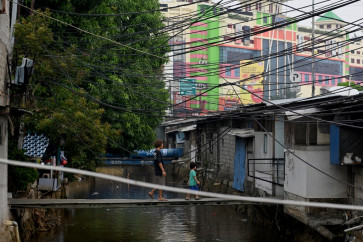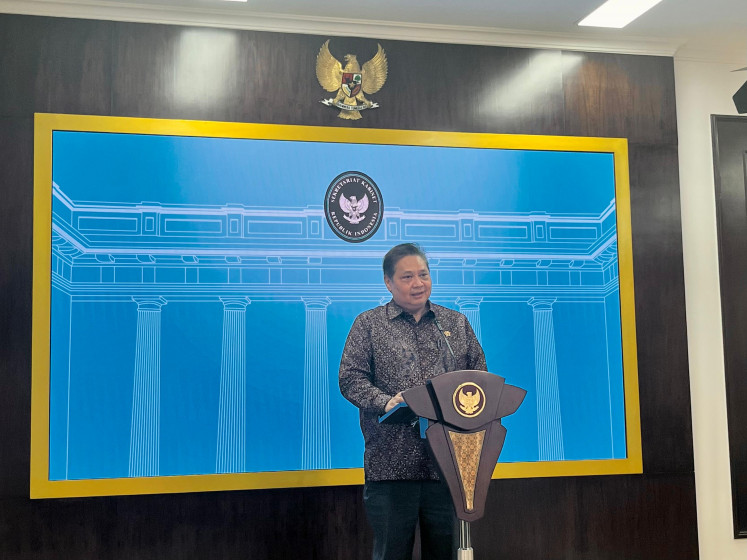'Marlina' and other films shed light on 'unseen' eastern Indonesia
It seems as though more filmmakers are shooting toward the east nowadays, setting a new trend. But is it a trend all filmmakers should follow?
Change text size
Gift Premium Articles
to Anyone
 A traveler relaxes on the Sumbanese savannah in East Nusa Tenggara in this stock photo. (Shutterstock/File)
A traveler relaxes on the Sumbanese savannah in East Nusa Tenggara in this stock photo. (Shutterstock/File)
M
oviegoers are still in awe by the breathtaking story of a widow named Marlina set in Sumba. The story centers on her long journey to justice, accompanied by the head of a bandit she beheaded in self-defense.
If you have watched Marlina the Murderer in Four Acts, you would have seen the amazing landscape of Sumba, an island in eastern Indonesia. If you haven’t, well, shame on you!
But what is up with Sumba, really? Why are we – Indonesian moviegoers – being constantly shown the exotic beauty of its nature, people and everything in between?
To answer that, we need to take a step back. Before Marlina, we saw Aisyah: Biarkan Kami Bersaudara (2016), about a Muslim teacher who struggles to teach children in a Catholic village in eastern Indonesia, specifically in North Central Timor regency, East Nusa Tenggara.
Read also: 'Marlina' redefines women’s strength through polar extremes
I know, I know, it’s not exactly Sumba, to be fair. But it does capture an environment similar to Marlina’s world. It is hot, it is less urban, and it has tons of problems we urban citizens don’t think really matter. In Aisyah, we are shown a classic portrait of prolonged drought, water sanitation, education and health issues, along with every infrastructural detail that determines whether an area is urban or rural. Although the main premise of the movie is religious differences and rejection, the details of the story tells of real conditions we thought no longer existed.
In Marlina, Sumba provides the backdrop to a different story that tackles the issues of feminism, bureaucracy and, most importantly, the criminal justice system in a rural area. People are becoming more aware of these issues that literally spark discussion among filmmakers, moviegoers and anyone on social media. The movie helps bring unseen problems back to the surface in the capital.
We have Mouly Surya and Garin Nugroho to thank for crafting the cinematic universe of Marlina, but they are not alone in their efforts.
Coming soon to your nearest cinema, Ernest Prakasa’s Susah Sinyal presents the theme of miscommunication between a mother and daughter who try to escape their daily lives in Jakarta after a loss. It is no secret that Ernest, an award-winning screenwriter, has a unique storytelling approach, using strong comedic and dramatic elements. It is sure to be a great film that we can all look forward to in December.
Aside from Ernest, the dynamic Mira Lesmana-Riri Riza duo is also in post-production for their film Humba Dreams, which takes place on Sumba. While we don't have details on the film or its release date, we can be sure to expect grade-A quality from these legends that awakened the country's film industry.
It seems as though more filmmakers are shooting toward the east nowadays, setting a new trend. But is it a trend all filmmakers should follow? Remember when Eiffel... I’m in Love (2003) was a massive hit because they shot it in Paris, and then it spawned tons of Indonesian film shot abroad without necessarily improving story quality? Is this the same kind of unremarkable trend?
Is it a movement to raise awareness about underprivileged areas of Indonesia? Or is it just our filmmakers' genuine passion to capture the beauty and honesty of rarely seen conditions?
One of the greatest things about the movies is that it brings all to light. We can view the characters' struggles, their surroundings, the obstacles they face and how the characters overcome their problems. Like Aisyah overcoming the village's water problem by implementing her class’s science project, or Marlina who defends herself in a kind of lawless land, movies bring real conditions to public view. The people of eastern Indonesia deserve to be seen, so that more awareness is raised.
So whether it’s a trend or not, movies that capture the untold stories of Indonesia deserve more recognition. And not just by how many festival awards they win, or how many tickets they sell, but by how the message these movies were trying to convey were discussed in relevant and appropriate discourse. At the end of the day, we do not want to prolong inequality in Indonesia, be it in economics, education or health. We want equal access for everyone, wherever they are in the archipelago.
We should be grateful that the quality of Indonesian films has improved significantly. We should be grateful that we can learn through a highly entertaining medium. We should also be grateful that we have every platform to channel our thoughts on film – to spark discussions and pursue real discourse on real issues. (dev/asw)
***
Reza Mardian is a film enthusiast and a big fan of Disney, Pixar, Studio Ghibli, and all films in the running for an Oscar or Festival Film Indonesia award. He is also a nursing graduate who is not working as a nurse.
---------------
Interested in writing for thejakartapost.com? We are looking for information and opinions from experts in a variety of fields or others with appropriate writing skills. The content must be original on the following topics: lifestyle (beauty, fashion, food), entertainment, science & technology, health, parenting, social media, travel, and sports. Send your piece to community@jakpost.com. For more information click here.









